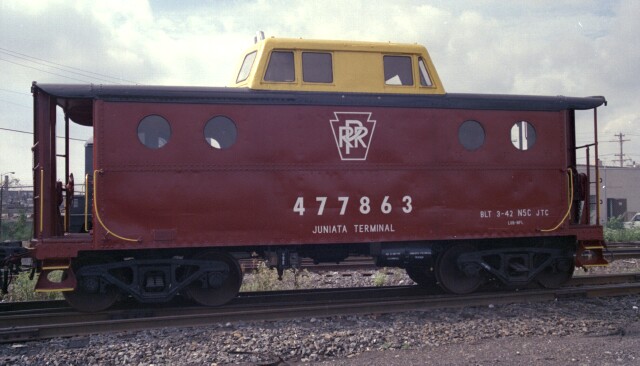The N5 was the original steel caboose built during or around WW I. As built, the N5 had straight across end platforms and no collision posts. The ends just had thin safetry railings. It also had lever brake controls rather than wheels. Finally, the stove was at one end, so the stack on the roof is near the end.
The N5B was built much later and was an upgrade to the N5. It was a foot or so longer and possible had a different frame. The N5B was built with collision posts and to accomodate, the end platforms and roofs were bulged out in the middle. The safety railings were more complex and robust, and it had a brakewheel. The stove was near the cupola, so the stack is next to the cupola.
The N5A was sort of an experiement. I think there were on 4 of them and they had Dureaya cushion underframes. The photos I have seen displayed fabricated steps on the ends rather than the typical cast ones.
Sometime in the 30s I think many of the original N5s were rebuilt to be close to the N5B. The interiors were done to the N5B layout, so the stack moved to near the cupola. They got collision posts and the upgraded ends with more safety railings. They had the same frame so should be a foot shorter.
There were many N5s and N5Bs.
The N5C was the porthole window version. I think it may have the same underframe and size as the N5B, hence the same series. It probably has the same interior layout too. This was built during WW II I think.
The last steel caboose was the N8 built after WW II. It is the one shown in the last photo above.
Note that antennas have nothing to do with which version of the cabin it was. Some of each class had antennas and some did not. It all depended on serice I guess and perhaps when shopping. I understand the trainphones did not work under the wires in the NE corridor, so cabins assigned there had no use for them. So antennas are not a spotting feature.
Originally up until after WWII, cabins were all freight car red, including handrails and truck sideframes. Around 1947, PRR started painting the roofs black during shopping and painting the hand rails safety yellow. Eventually the entire roof and cupola were painted black in the later paint schemes. Before 1955, as far as I know, all classes except N8 did not have any keystone logos, only the road name in 7 or 9 inch letters. The N8 as built had an original paint scheme with the circle logo. When they started the shadow keystone logo in 1955, the cabins also got logos and the lettering was much larger.
The last paint scheme, which I think is ugly, just has the plain PRR and the plain Logo. Not sure when this started, but it is probably the early 60s.





























